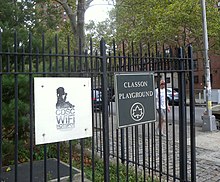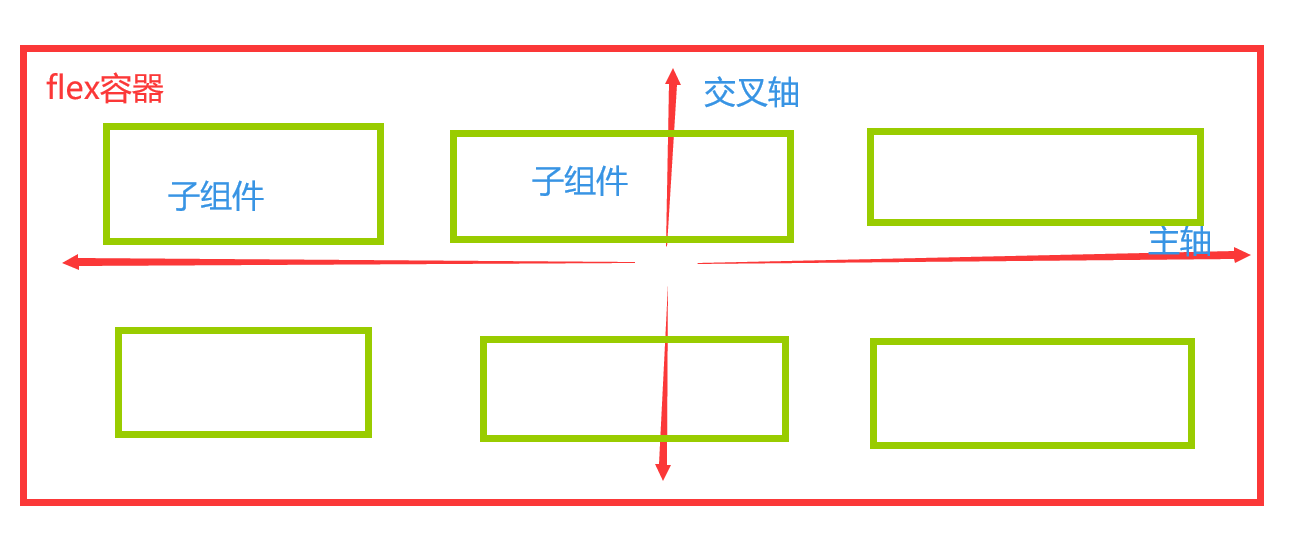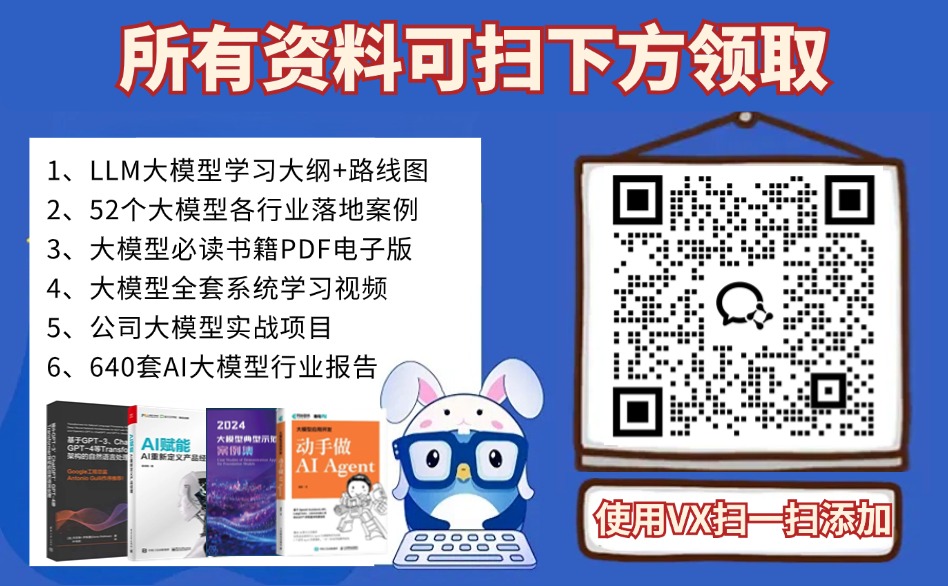本文主要是介绍(一百三十四)Passpoint 基础知识学习,希望对大家解决编程问题提供一定的参考价值,需要的开发者们随着小编来一起学习吧!
1.wiki
在wiki中搜索Passpoint,直接就跳转到了Hotspot(Wi-Fi)界面,https://en.wikipedia.org/wiki/Hotspot_(Wi-Fi)
那就从头先看下Hotspot相关基础知识吧。
A hotspot is a physical location where people may obtain Internet access, typically using Wi-Fi technology, via a wireless local area network (WLAN) using a router connected to an internet service provider.
Public hotspots may be created by a business for use by customers, such as coffee shops or hotels. Public hotspots are typically created from wireless access points configured to provide Internet access, controlled to some degree by the venue. In its simplest form, venues that have broadband Internet access can create public wireless access by configuring an access point (AP), in conjunction with a router and connecting the AP to the Internet connection. A single wireless router combining these functions may suffice.[1]
Private hotspots may be configured on a smartphone or tablet with a mobile network data plan to allow Internet access to other devices via Bluetooth pairing or if both the hotspot device and the device/s accessing it are connected to the same Wi-Fi network.
热点是人们使用Wi-Fi技术(可以通过无线局域网(WLAN)使用连接到互联网服务提供商的路由器)获得互联网接入的物理位置。
公共热点可以由企业创建以供客户使用,例如咖啡店或酒店。 公共热点通常由提供因特网访问的无线接入点创建,在某种程度上由场地控制。 在最简单的形式中,具有宽带互联网接入的场所可以通过配置接入点(AP)与路由器以及将AP连接到互联网连接来创建公共无线接入。 组合这些功能的单个无线路由器就足够了。[1]
可以在具有移动网络数据访问能力的智能手机或平板电脑上配置专用热点,以允许通过蓝牙配对来访问其他设备,或者如果热点设备和访问它的设备都连接到相同的Wi-Fi网络。(这句没看懂。。。)
Uses
The public can use a laptop or other suitable portable device to access the wireless connection (usually Wi-Fi) provided. Of the estimated 150 million laptops, 14 million PDAs, and other emerging Wi-Fi devices sold per year for the last few years,[when?] most include the Wi-Fi feature.
The iPass 2014 interactive map, that shows data provided by the analysts Maravedis Rethink, shows that in December 2014 there are 46,000,000 hotspots worldwide and more than 22,000,000 roamable hotspots. More than 10,900 hotspots are on trains, planes and airports (Wi-Fi in motion) and more than 8,500,000 are "branded" hotspots (retail, cafés, hotels). The region with the largest number of public hotspots is Europe, followed by North America and Asia.[2]
Libraries throughout the United States are implementing hotspot lending programs to extend access to online library services to users at home who cannot afford in-home Internet access or do not have access to Internet infrastructure. The New York Public Library was the largest program, lending out 10,000 devices to library patrons.[3] Similar programs have existed in Kansas[4], Maine[5], and Oklahoma[6]; and many individual libraries are implementing these programs.[7]
公众可以使用笔记本电脑或其他合适的便携式设备来访问所提供的无线连接(通常是Wi-Fi)。在过去几年中估计每年销售的1.5亿台笔记本电脑,1400万台PDA和其他新兴Wi-Fi设备中,[何时?]大多数都包括Wi-Fi功能。
iPass 2014交互式地图显示了分析师Maravedis Rethink提供的数据,显示2014年12月全球有46,000,000个热点和超过22,000,000个可漫游热点。火车,飞机和机场(Wi-Fi运动)上有超过10,900个热点,超过8,500,000个热点是“品牌”热点(零售,咖啡馆,酒店)。公共热点数量最多的地区是欧洲,其次是北美和亚洲。[2]
美国各地的图书馆正在实施热点提供计划,以扩大对家庭用户的在线图书馆服务的访问,这些用户无法负担家庭互联网接入或无法访问互联网基础设施。纽约公共图书馆是最大的计划,向图书馆的顾客提供10,000台设备。[3]堪萨斯州[4],缅因州[5]和俄克拉荷马州[6]也存在类似的计划;许多个别图书馆正在实施这些计划。[7]
Security issues
Security is a serious concern in connection with public and private hotspots. There are three possible attack scenarios. First, there is the wireless connection between the client and the access point, which needs to be encrypted, so that the connection cannot be eavesdropped or attacked by a man-in-the-middle attack. Second, there is the hotspot itself. The WLAN encryption ends at the interface, then travels its network stack unencrypted and then, third, travels over the wired connection up to the BRAS of the ISP.
Depending upon the set up of a public hotspot, the provider of the hotspot has access to the metadata and content accessed by users of the hotspot. The safest method when accessing the Internet over a hotspot, with unknown security measures, is end-to-end encryption. Examples of strong end-to-end encryption are HTTPS and SSH.
Some hotspots authenticate users; however, this does not prevent users from viewing network traffic using packet sniffers.[8]
Some vendors provide a download option that deploys WPA support. This conflicts with enterprise configurations that have solutions specific to their internal WLAN.[citation needed]
In order to provide robust security to hotspot users, the Wi-Fi Alliance is developing a new hotspot program that aims to encrypt hotspot traffic with WPA2 security. The program was scheduled to launch in the first half of 2012.[needs update][citation needed]
The Opportunistic Wireless Encryption (OWE) standard provides encrypted communication in open Wi-Fi networks, alongside the WPA3 standard.[9]
与公共和私人热点相关的安全性是一个严重的问题。有三种可能的攻击方案。首先,客户端和接入点之间存在无线连接,需要加密,以便连接不会被中间人攻击窃听或攻击。其次,有热点本身。 WLAN加密在接口处结束,然后以未加密的方式传输其网络堆栈,然后,第三个,通过有线连接传输到ISP的BRAS。
根据公共热点的设置,热点的提供者可以访问热点用户访问的元数据和内容。通过热点访问Internet时采用未知安全措施的最安全方法是端到端加密。强大的端到端加密示例包括HTTPS和SSH。
一些热点验证用户;但是,这并不妨碍用户使用数据包嗅探器查看网络流量。[8]
某些供应商提供了部署WPA支持的下载选项。这与具有特定于其内部WLAN的解决方案的企业配置冲突。[引证需要]
为了给热点用户提供强大的安全性,Wi-Fi联盟正在开发一个新的热点程序,旨在利用WPA2安全性加密热点流量。该计划计划于2012年上半年启动。[需要更新] [需要引证]
机会无线加密(OWE)标准在开放式Wi-Fi网络中提供加密通信,以及WPA3标准。[9]
Locations
Public hotspots are often found at airports, bookstores, coffee shops, department stores, fuel stations, hotels, hospitals, libraries, public pay phones, restaurants, RV parks and campgrounds, supermarkets, train stations, and other public places. Additionally, many schools and universities have wireless networks on their campuses.
公共热点经常出现在机场,书店,咖啡馆,百货商店,加油站,酒店,医院,图书馆,公共付费电话,餐馆,房车公园和露营地,超市,火车站和其他公共场所。 此外,许多学校和大学的校园都有无线网络。
Types
Free hotspots operate in two ways:
- Using an open public network is the easiest way to create a free hotspot. All that is needed is a Wi-Fi router. Similarly, when users of private wireless routers turn off their authentication requirements, opening their connection, intentionally or not, they permit piggybacking (sharing) by anyone in range.[10]
- Closed public networks use a HotSpot Management System to control access to hotspots. This software runs on the router itself or an external computer allowing operators to authorize only specific users to access the Internet[11]. Providers of such hotspots often associate the free access with a menu, membership, or purchase limit. Operators may also limit each user's available bandwidth (upload and download speed) to ensure that everyone gets a good quality service. Often this is done through service-level agreements.[citation needed]
免费热点有两种运作方式:
使用开放的公共网络是创建免费热点的最简单方法。 所需要的只是一个Wi-Fi路由器。 同样,当私有无线路由器的用户关闭其身份验证要求时,无论是否故意打开他们的连接,他们都允许任何人在范围内捎带(共享)。[10]
封闭的公共网络使用HotSpot管理系统来控制对热点的访问。 该软件在路由器本身或外部计算机上运行,允许运营商仅授权特定用户访问互联网[11]。 此类热点的提供商通常将免费访问与菜单,成员资格或购买限制相关联。 运营商还可以限制每个用户的可用带宽(上传和下载速度),以确保每个人都获得优质服务。 通常这是通过服务级别协议来完成的。[需要引证]
Commercia
l hotspots
A commercial hotspot may feature:
- A captive portal / login screen / splash page that users are redirected to for authentication and/or payment. The captive portal / splash page sometimes includes the social login buttons.
- A payment option using a credit card, iPass, PayPal, or another payment service (voucher-based Wi-Fi)
- A walled garden feature that allows free access to certain sites
- Service-oriented provisioning to allow for improved revenue
- Data analytics and data capture tools, to analyze and export data from Wi-Fi clients
Many services provide payment services to hotspot providers, for a monthly fee or commission from the end-user income. For example, Amazingports can be used to set up hotspots that intend to offer both fee-based and free internet access, and ZoneCD is a Linux distribution that provides payment services for hotspot providers who wish to deploy their own service.[citation needed]
Major airports and business hotels are more likely to charge for service, though most hotels provide free service to guests; and increasingly, small airports and airline lounges offer free service.[citation needed]. Retail shops, public venues and offices usually provide a free Wi-Fi SSID for their guests and visitors.
Roaming services are expanding among major hotspot service providers. With roaming service the users of a commercial provider can have access to other providers' hotspots, either free of charge or for extra fees, which users will usually be charged on an access-per-minute basis.[citation needed]
商业热点可能包括:
- 用户被重定向到用于身份验证和/或付款的强制门户/登录屏幕/启动页面。强制门户/启动页面有时包括社交登录按钮。
- 使用信用卡,iPass,PayPal或其他支付服务(基于凭证的Wi-Fi)的付款选项
- 带围墙的花园特色,可以免费访问某些站点
- 面向服务的配置可以提高收入
- 数据分析和数据捕获工具,用于分析和导出Wi-Fi客户端的数据
许多服务为热点提供商提供支付服务,按月收费或来自最终用户收入的佣金。例如,Amazingports可用于设置打算提供基于费用和免费互联网访问的热点,ZoneCD是一个Linux发行版,为希望部署自己的服务的热点提供商提供支付服务。[需要引证]
虽然大多数酒店为客人提供免费服务,但主要机场和商务酒店更有可能收取服务费;小型机场和航空公司休息室越来越多地提供免费服务。[需要引证]。零售商店,公共场所和办公室通常为其客人和访客提供免费Wi-Fi SSID。
漫游服务正在主要热点服务提供商之间扩展。通过漫游服务,商业提供商的用户可以免费或额外收费访问其他提供商的热点,用户通常会按每分钟访问费用收费。[引证需要]
Software hotspots
Many Wi-Fi adapters built into or easily added to consumer computers and mobile devices include the functionality to operate as private or mobile hotspots, sometimes referred to as "mi-fi".[12] The use of a private hotspot to enable other personal devices to access the WAN (usually but not always the Internet) is a form of bridging, and known as tethering. Manufacturers and firmware creators can enable this functionality in Wi-Fi devices on many Wi-Fi devices, depending upon the capabilities of the hardware, and most modern consumer operating systems, including Android, Apple OS X 10.6 and later,[13] Windows mobile,[citation needed] and Linux include features to support this. Additionally wireless chipset manufacturers such as Atheros, Broadcom, Intel and others, may add the capability for certain Wi-Fi NICs, usually used in a client role, to also be used for hotspot purposes. However, some service providers, such as AT&T,[14] Sprint,[15] and T-Mobile[16] charge users for this service or prohibit and disconnect user connections if tethering is detected.
Third-party software vendors offer applications to allow users to operate their own hotspot, whether to access the Internet when on the go, share an existing connection, or extend the range of another hotspot.
内置或易于添加到消费者计算机和移动设备的许多Wi-Fi适配器包括作为私人或移动热点运行的功能,有时称为“mi-fi”。[12]使用私有热点使其他个人设备能够访问WAN(通常但不总是互联网)是一种桥接形式,称为网络共享。制造商和固件创建者可以在许多Wi-Fi设备上的Wi-Fi设备中启用此功能,具体取决于硬件的功能,以及大多数现代消费者操作系统,包括Android,Apple OS X 10.6及更高版本,[13] Windows mobile ,[citation needed]和Linux包含支持此功能的功能。此外,Atheros,Broadcom,Intel等无线芯片组制造商可能会增加某些Wi-Fi NIC的功能,这些功能通常用于客户端角色,也可用于热点目的。但是,某些服务提供商,如AT&T,[14] Sprint,[15]和T-Mobile [16]向用户收取此服务的费用,或者如果检测到网络共享则禁止和断开用户连接。
第三方软件供应商提供的应用程序允许用户操作自己的热点,无论是在旅途中访问Internet,共享现有连接还是扩展其他热点的范围。
Hotspot 2.0
Hotspot 2.0, also known as HS2 and Wi-Fi Certified Passpoint,[17] is an approach to public access Wi-Fi by the Wi-Fi Alliance. The idea is for mobile devices to automatically join a Wi-Fi subscriber service whenever the user enters a Hotspot 2.0 area, in order to provide better bandwidth and services-on-demand to end-users and relieve carrier infrastructure of some traffic.
Hotspot 2.0 is based on the IEEE 802.11u standard, which is a set of protocols published in 2011 to enable cellular-like roaming. If the device supports 802.11u and is subscribed to a Hotspot 2.0 service it will automatically connect and roam.[18][19][20]
Supported devices
- Some Chinese tablet computers[citation needed]
- Some THL smartphones[citation needed]
- Apple mobile devices running iOS 7 and up[21]
- Some Samsung Galaxy smartphones[22]
- Windows 10 devices have full support for network discovery and connection.[23]
- Windows 8 and Windows 8.1 lack network discovery, but support connecting to a network when the credentials are known.[23]
Hotspot 2.0,也称为HS2和Wi-Fi认证Passpoint,[17]是Wi-Fi联盟公共接入Wi-Fi的一种方法。这个想法是移动设备在用户进入Hotspot 2.0区域时自动加入Wi-Fi用户服务,以便为最终用户提供更好的带宽和按需服务,并减轻某些流量的运营商基础设施。
Hotspot 2.0基于IEEE 802.11u标准,该标准是2011年发布的一组协议,用于实现类似蜂窝的漫游。如果设备支持802.11u并订阅了Hotspot 2.0服务,它将自动连接并漫游。[18] [19] [20]
支持的设备
一些中国平板电脑[引证需要]
一些THL智能手机[引证需要]
运行iOS 7及更高版本的Apple移动设备[21]
一些三星Galaxy智能手机[22]
Windows 10设备完全支持网络发现和连接。[23]
Windows 8和Windows 8.1缺少网络发现,但支持在知道凭证时连接到网络。[23]
Billing
| Net traffic | |||||||
|---|---|---|---|---|---|---|---|
| low | high | ||||||
| Audio | Video | Data | Audio | Video | Data | ||
| User needs | time-critical | 7 | 5 | 0 | 6 | 4 | 0 |
| not time-critical | - | - | 2 | - | - | 2 | |
The "user-fairness model" is a dynamic billing model, which allows volume-based billing, charged only by the amount of payload (data, video, audio). Moreover, the tariff is classified by net traffic and user needs.[24][citation needed]
If the net traffic increases, then the user has to pay the next higher tariff class. The user can be prompted to confirm that they want to continue the session in the higher traffic class.[dubious – discuss] A higher class fare can also be charged for delay sensitive applications such as video and audio, versus non time-critical applications such as reading Web pages and sending e-mail.
“用户 - 公平模型”是一种动态计费模型,它允许基于数量的计费,仅由有效载荷量(数据,视频,音频)收费。 此外,关税按净流量和用户需求进行分类。[24] [引证需要]
如果净流量增加,那么用户必须支付下一个更高的关税等级。 可以提示用户确认他们想要在更高流量类别中继续会话。[可疑 - 讨论]对于延迟敏感的应用程序(如视频和音频),与非时间关键应用程序(比如阅读网页和发送电子邮件)相比,也可以收取更高级别的票价。
| Net traffic | |||
|---|---|---|---|
| low | high | ||
| User needs | time-critical | standard | exclusive |
| not time-critical | low priced | standard | |
The "User-fairness model" can be implemented with the help of EDCF (IEEE 802.11e). A EDCF user priority list shares the traffic in 3 access categories (data, video, audio) and user priorities (UP).[24][citation needed]
- Data [UP 0|2]
- Video [UP 5|4]
- Audio [UP 7|6]
See Service-oriented provisioning for viable implementations.
325/5000
“用户 - 公平模型”可以在EDCF(IEEE 802.11e)的帮助下实现。 EDCF用户优先级列表以3种访问类别(数据,视频,音频)和用户优先级(UP)共享流量。[24] [需要引证]
数据[UP 0 | 2]
视频[UP 5 | 4]
音频[UP 7 | 6]
有关可行的实现,请参阅面向服务的配置。
Legal issues
See also: Legality of piggybacking
Depending upon the set up of a public hotspot, the provider of the hotspot has access to the metadata and content accessed by users of the hotspot, and may have legal obligations related to privacy requirements and liability for use of the hotspot for unlawful purposes.[25] In countries where the internet is regulated or freedom of speech more restricted, there may be requirements such as licensing, logging, or recording of user information.[citation needed] Concerns may also relate to child safety, and social issues such as exposure to objectionable content, protection against cyberbullying and illegal behaviours, and prevention of perpetration of such behaviors by hotspot users themselves.
European Union
The Data Retention Directive which required hotspot owners to retain key user statistics for 12 months was annulled by the Court of Justice of the European Union in 2014. The Directive on Privacy and Electronic Communications was replaced in 2018 by the General Data Protection Regulation, which imposes restrictions on data collection by hotspot operators.
United Kingdom
- Data Protection Act 1998: The hotspot owner must retain individual's information[dubious – discuss] within the confines of the law.
- Digital Economy Act 2010: Deals with, among other things, copyright infringement, and imposes fines of up to £250,000 for contravention.
法律问题
另见:捎带的合法性
根据公共热点的设置,热点的提供者可以访问热点用户访问的元数据和内容,并且可能具有与隐私要求相关的法律义务以及将热点用于非法目的的责任。[ 25]在互联网受到监管或言论自由受到限制的国家,可能会有诸如许可,记录或记录用户信息等要求。[引证需要]担忧也可能涉及儿童安全和社会问题,如暴露于令人反感的内容,防止网络欺凌和非法行为,以及防止热点用户自己犯下此类行为。
欧洲联盟
2014年,欧盟法院废除了要求热点所有者保留关键用户统计数据12个月的数据保留指令。“隐私和电子通信指令”于2018年被“通用数据保护条例”取代,该条例规定热点运营商对数据收集的限制。
英国
1998年数据保护法案:热点所有者必须在法律范围内保留个人信息[可疑 - 讨论]。
2010年数字经济法案:处理侵犯版权等问题,并对违法行为处以高达250,000英镑的罚款。
History

Public park in Brooklyn, New Yorkhas free Wi-Fi from a local corporation.
Public access wireless local area networks (LANs) were first proposed by Henrik Sjödin at the NetWorld+Interop conference in The Moscone Center in San Francisco in August 1993.[26] Sjödin did not use the term "hotspot" but referred to publicly accessible wireless LANs.
The first commercial venture to attempt to create a public local area access network was a firm founded in Richardson, Texas known as PLANCOM (Public Local Area Network Communications). The founders of the venture, Mark Goode, Greg Jackson, and Brett Stewart dissolved the firm in 1998, while Goode and Jackson created MobileStar Networks. The firm was one of the first to sign such public access locations as Starbucks,[27] American Airlines,[28] and Hilton Hotels.[29] The company was sold to Deutsche Telecom in 2001, who then converted the name of the firm into "T-Mobile Hotspot". It was then that the term "hotspot" entered the popular vernacular as a reference to a location where a publicly accessible wireless LAN is available.
ABI Research reported there was a total of 4.9 million global Wi-Fi hotspots in 2012.[30] In 2016 the Wireless Broadband Alliance predicted a steady annual increase from 5.2m public hotspots in 2012 to 10.5m in 2018.[31]
位于纽约布鲁克林的公共公园提供当地公司的免费无线网络连接。
公共接入无线局域网(LAN)最初由HenrikSjödin于1993年8月在旧金山Moscone中心举行的NetWorld + Interop会议上提出。[26] Sjödin没有使用术语“热点”,而是指可公开访问的无线局域网。
第一个尝试建立公共局域网接入网络的商业企业是在德克萨斯州理查森市成立的一家名为PLANCOM(公共局域网通信)的公司。该公司的创始人马克古德,格雷格杰克逊和布雷特斯图尔特于1998年解散了公司,而古德和杰克逊创建了MobileStar Networks。该公司是第一批签署星巴克,[27]美国航空,[28]和希尔顿酒店等公共接入地点的公司之一。[29]该公司于2001年被出售给德意志电信,然后将该公司的名称改为“T-Mobile Hotspot”。就在那时,“热点”一词进入了流行的白话,作为对可公共访问无线局域网可用位置的参考。
ABI Research报告称,2012年全球共有490万个Wi-Fi热点。[30] 2016年,无线宽带联盟预测年度稳定增长,从2012年的520万公共热点增加到2018年的10.5亿。[31]
2.总结
Hotspot 2.0,也称为HS2和Wi-Fi认证Passpoint,是Wi-Fi联盟公共接入Wi-Fi的一种方法。这个想法是移动设备在用户进入Hotspot 2.0区域时自动加入Wi-Fi用户服务,以便为最终用户提供更好的带宽和按需服务,并减轻某些流量的运营商基础设施的服务压力。
Hotspot 2.0基于IEEE 802.11u标准,该标准是2011年发布的一组协议,用于实现类似蜂窝的漫游。如果设备支持802.11u并订阅了Hotspot 2.0服务,它将自动连接并漫游。
这篇关于(一百三十四)Passpoint 基础知识学习的文章就介绍到这儿,希望我们推荐的文章对编程师们有所帮助!









